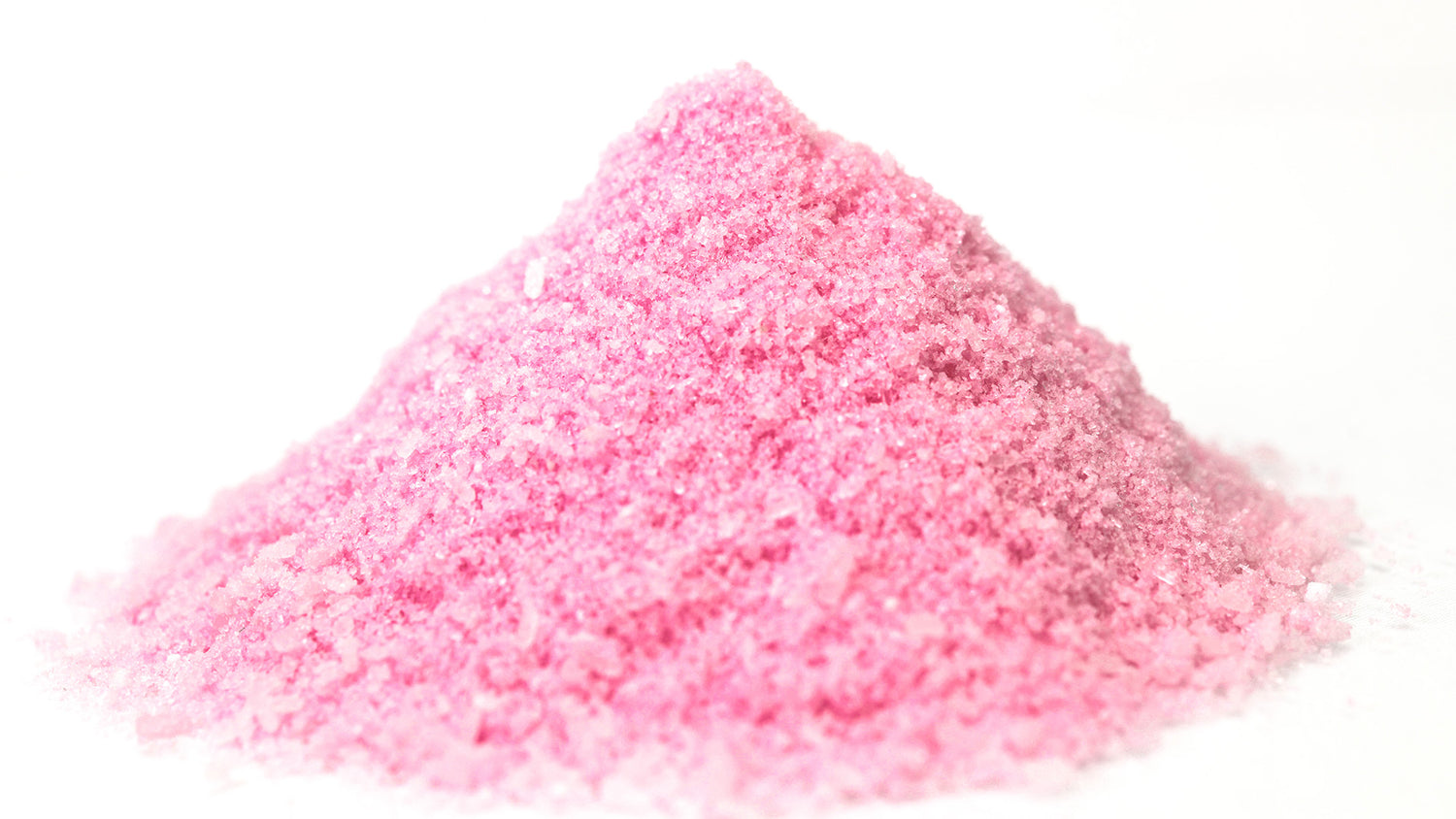In the same way that "calories are just calories" oversimplifies the complex world of human nutrition, the idea that "salts are just salts" completely fails to capture the intricacies of plant fertilization. In this article, we'll explore why not all fertilizer blends are created equal, and how choosing the right blend can impact plant growth and crop quality.
Elemental Ratios and Plant Growth
While it’s true that all fertilizer salts are composed of ions, it’s important to understand that not all salt formulas are equivalent when it comes to plant nutrition. Just as the balance and ratios of macronutrients (proteins, fats, and carbohydrates) in human diets affects our health and well-being, the ratio of elements in a fertilizer blend has critical impacts on plant growth. One example of this can be seen in the research surrounding nitrogen and its effect on secondary metabolic byproducts.
Excessive nitrogen, particularly in the late flowering phase, has been shown to reduce the production of secondary metabolic byproducts like trichomes and terpenes. Trichomes are tiny, hair-like structures on the surface of plants that serve various functions, including the production of essential oils, while terpenes are aromatic compounds that contribute to the unique flavors and scents of plants.
An imbalance of nitrogen can lead to a decrease in these valuable compounds, ultimately affecting the overall quality of the crop. With the premium placed on flower quality, it's essential to choose a fertilizer blend that provides the proper elemental ratios at the right times to promote optimal plant growth and development.
While having adequate nitrogen levels during veg and stretch periods is critical to setting up the best plant architecture going into the swell period, many popular nutrition programs apply nitrogen in the incorrect ratios and amounts far too late into the flowering cycle. As a result, susceptible cultivars will remain vegetative when they should be ripening, causing a delayed maturation with low levels of terpenes.
Balancing Macronutrients and Micronutrients in the Fertilizer Parts
Fertilizers are typically composed of a blend of different salts, which provide plants with the essential macronutrients (nitrogen, phosphorus, and potassium) and micronutrients (such as calcium, magnesium, and iron) they need to thrive. The specific combinations of these salts in a fertilizer blend can have a profound impact on nutrient availability and plant health.
-
Macronutrient Ratios: The ratios of nitrogen (N), phosphorus (P), and potassium (K) in a fertilizer blend are often represented by the N-P-K values found on fertilizer labels. The optimal N-P-K ratio depends on the specific crop and its growth stage. Fertilizer blends high in nitrogen are suitable for promoting vegetative growth, while a blend with a higher phosphorus content is better for supporting flowering and fruiting. By tailoring the N-P-K ratios in your fertilizer blend to match the needs of your crop at various growth stages, you can optimize plant health and productivity. One example of this can be seen in the research surrounding nitrogen and its effect on secondary metabolic byproducts.
Excessive nitrogen, particularly in the late flowering phase, has been shown to reduce the production of secondary metabolic byproducts like trichomes and terpenes. Trichomes are tiny, hair-like structures on the surface of plants that serve various functions, including the production of essential oils, while terpenes are aromatic compounds that contribute to the unique flavors and scents of plants.
An imbalance of nitrogen can lead to a decrease in these valuable compounds, ultimately affecting the overall quality of the crop. With the premium placed on flower quality, it's essential to choose a fertilizer blend that provides the proper elemental ratios at the right times to promote optimal plant growth and development.
While having adequate nitrogen levels during veg and stretch periods is critical to setting up the best plant architecture going into the swell period, many popular nutrition programs apply nitrogen in the incorrect ratios and amounts far too late into the flowering cycle. As a result, susceptible cultivars will remain vegetative when they should be ripening, causing a delayed maturation with low levels of terpenes.
-
Micronutrient Balance: While micronutrients are required in smaller quantities than macronutrients, they still play a vital role in plant growth and development. The specific combination of micronutrient salts in a fertilizer blend can impact their availability and uptake. For instance, chelated micronutrients (such as Fe-EDTA) are more readily available for plant uptake than their non-chelated counterparts.
Ensuring that your fertilizer blend contains a balanced mix of micronutrients in forms that are easily accessible to plants can help prevent nutrient deficiencies and promote optimal growth. At best, an imbalance of micronutrients leads to diminished crop quality and compromised smell and visual characteristics. At worst, micronutrient deficiencies or toxicities can result in stunted growth, poor yield, or even crop failure.
Synergistic and Antagonistic Relationships
As mentioned earlier, certain combinations of salts can have synergistic or antagonistic effects on nutrient availability and uptake. Understanding these relationships is essential for creating an effective fertilizer blend.
- Synergistic Relationships: Synergistic relationships between nutrients can enhance the availability or uptake of one or more elements. For example, the presence of ammonium in a fertilizer blend can improve the uptake of potassium, while the inclusion of nitrate can enhance calcium uptake. By leveraging these synergistic relationships, you can create a fertilizer blend that maximizes nutrient availability and efficiency.
- Antagonistic Interactions: Conversely, antagonistic interactions between nutrients can reduce the availability or uptake of one or more elements. For instance, high levels of potassium can compete with magnesium for uptake by plant roots, potentially leading to magnesium deficiency. To minimize antagonistic interactions, carefully manage the concentrations of salts in your fertilizer blend and make adjustments as needed based on soil tests, plant tissue tests, and visual observations of plant health.
The specific combinations of salts in a fertilizer blend play a crucial role in determining nutrient availability, uptake, and overall plant health. By considering the optimal N-P-K ratios, micronutrient balance, and the synergistic and antagonistic relationships between nutrients, FRA creates an integrated nutrition system that support optimal plant growth and yield.
Quality and Consistency of Inputs
Much like the importance of sourcing high-quality ingredients for a gourmet meal, using high-quality and consistent inputs for your fertilizer blend is crucial. Inferior or inconsistent inputs can lead to uneven nutrient availability, negatively affecting plant growth, and potentially increasing the risk of deficiencies or toxicities.
Impurities in the raw materials used for fertilizer production can introduce unwanted elements that interfere with nutrient uptake or cause harm to plants. Ensuring that the manufacturing process adheres to strict quality control standards will result in a high-quality final product that delivers the desired nutrients effectively and consistently.
While Front Row Ag has had some growing pains (our customers who received wet Part B understand), investigating the causes of problems has led to innovations and solutions in manufacturing that greatly increase the consistency and durability of our products.
The bottom line
The concept that "salts are just salts" is a dangerous oversimplification of the complex world of plant fertilization. By understanding the importance of elemental ratios, the quality and consistency of inputs, and the critical role of micronutrient packages and ratios, you can make informed decisions about your fertilizer choices and contribute to improved plant growth and crop quality.
Front Row Ag is committed to providing high-quality fertilizers with the right balance of macronutrients and micronutrients, tailored to your crop's specific needs. By choosing Front Row Ag, you can trust that you are giving your plants the best possible nutrition for optimal growth and yield.




